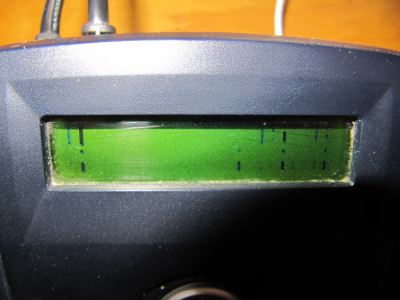I’ve had a Snom 300 VOIP phone for a few years now; it’s a nice little phone, and can even run Linux, although I haven’t ever tried doing so. At one point, I had it connected up to an elaborate Asterisk setup that was able to get rid of telemarketers and route calls automatically via my landline or VOIP line depending on whichever was the cheapest. These days, I no longer have the landline and don’t really want to run a PC all day long, so I’m just using the phone by itself through MyNetFone.
Unfortunately, the LCD display on it seems to have died; the vast majority of vertical pixel lines are displayed either very faintly, or not at all:

It’s probably not all that hard to fix, assuming that it’s just a matter of replacing the display itself and not hunting for a dead component, but I decided instead to have a look and see what the software offers to work around this – and discovered the Snom’s “Action URLs”.
Basically, the phone can make HTTP requests to configurable URLs when it receives one of a number of events – for example, on-hook, off-hook, call-forwarding … and incoming call, just to name a few. It can also pass various runtime variables to these; so for an incoming call, for example, you could add the caller-id to the url and then get a server to process this.
After a little bit of messing around, I hooked this into GNOME’s notification system, via the Bottle python web framework (which is probably overkill for something like this), and the end result is cidalert, a desktop caller-id notification system:

The source is up on Bitbucket, should anyone think of any cool features to add to it.
